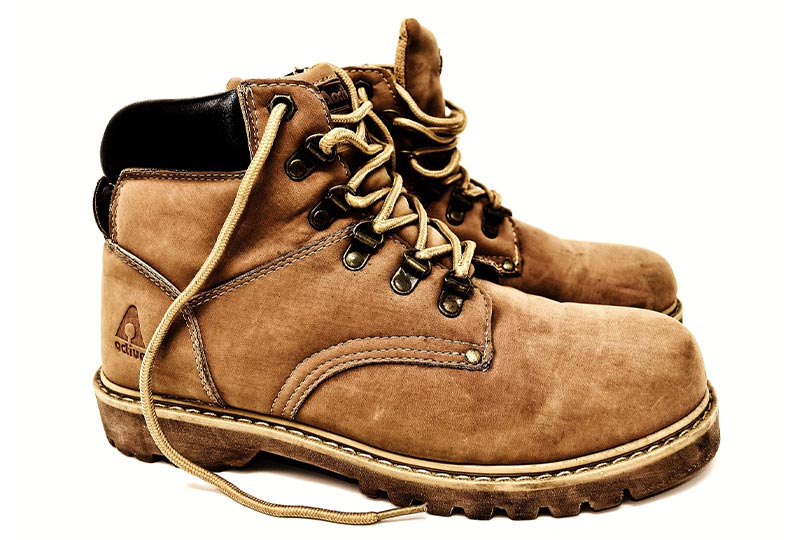The climb to Africa’s highest peak, Mt. Kilimanjaro, is not an easy ride. While the climb does not require any specific training, you need to consider a lot of things, including the right trekking gears. And the foremost priority among gears is the right hiking boots, in order to climb Mt. Kilimanjaro.
Having the right kind of footwear is very important while climbing. Your shoes should offer good protection and be comfortable. Its main purpose is to protect your feet against harsh conditions such as rough terrains, muddy, slippery paths, steep trails. We will be taking you through all the things you need to consider while choosing the climbing boots for Mt. Kilimanjaro.

Himalayan Glacier is in no way promoting any brand; our suggestions are entirely based on the experiences of other travelers who have traveled with us.
-
Things you need to consider while choosing Climbing Boots for Mount Kilimanjaro
- 1. Choose the right sizing and perfect fit
- 2. Pick the right boots with comfortable weight
- 3. Your shoes must provide proper ankle support
- 4. Hiking boots for Kilimanjaro Climb should always be waterproof
- 5. You need to consider lacing system
- 6. Midsoles and cushioning should be comfortable enough
- 7. Strong outsoles and traction is a must
- 8. Hiking boots must ensure toe protection
- Frequently Asked Questions
Things you need to consider while choosing Climbing Boots for Mount Kilimanjaro
1. Choose the right sizing and perfect fit
When you are going on long-day trips like Mt. Kilimanjaro, you literally have to live in your shoes. So, if they do not fit right, your entire trip can be a nightmare.
The difference between blisters and bliss is taking the time to get a great fit.
Your hiking shoes should give you a perfect fit. The first thing here is to know your size. Further, the boots should feel snug with enough space for your toes to wiggle and comfortable around your ankle. The key here is to remember that the boot should have enough flexibility to enable movement for toes but not so much that the foot slides inside.
2. Pick the right boots with comfortable weight
We suggest avoiding hiking boots that are too heavy. It will be hard to take long stretches with heavy boots, and they will slow your pace. It’s better to choose synthetic boots rather than leather ones, which are heavier.
The boots may not feel heavy when you wear them at the store, but they can be troublesome after the hours-long walks.
We recommend walking around the store, throwing some kicks, and moving your legs to get the idea of the boot’s weight.

3. Your shoes must provide proper ankle support
It’s essential to consider your ankle while picking hiking boots. You need proper ankle support on tour boots to prevent sprains and breaks. The wrong pair could end up giving you a busted ankle. A good option is to opt for high-cut hiking boots, which have a high rise covering your ankles and provides more support.
If you choose to go with low-cut boots, make sure your boots have proper cushioning around the ankle area.
4. Hiking boots for Kilimanjaro Climb should always be waterproof
Since the climate of the Kilimanjaro region is often wet, there are more chances of rainfall even in dry seasons. So you need to choose waterproof material boots. Wet boots will be heavy and you will not be able to walk properly with a heavyweight on your feet. The key here is to stay away from leather material boots and choose boots made up of synthetic material.
5. You need to consider lacing system
The lacing system also matters a lot for your hiking boots. Altering the lacing system for ascents and descents is a smart decision. You should tighten the lace at the forefoot area for ascents while lacing the entire area tightly for descents. Boots with a lacing system that divides the lacing into two zones allow better customization for ease and comfort and.
6. Midsoles and cushioning should be comfortable enough
The insole is a hidden layer inside the shoe above the midsole, and the sole unit and cushioning is the ability of a shoe to absorb shock. Both are the cornerstones of good hiking shoes. The proper insole and cushioning ensure comfort for your feet, so you need to make sure that those parts of shoes are made up of soft yet sturdy material.

7. Strong outsoles and traction is a must
The outsole of shoes is what provides traction and gives your feet a proper grip. You need proper traction to avoid slipping while walking on surfaces like grasses, streams, scree, or ice.
As for Kilimanjaro, you have to walk through muddy and slippery trails, and there is ice and snow near the summit. So, you need strong traction on the outsoles of your hiking boots.
Outsoles tend to wear out faster than other parts of the shoes, but the good news is they are also mendable.
8. Hiking boots must ensure toe protection
Good hiking boots must provide protection for your toes. If your shoe squeezes your toes, you will not be able to walk properly. To tackle this issue, boots are made with wide toe space in recent years as the wide toe-spaced boots provide more space for your toes to spread out.
Further, to protect your toes, you must remember to trim off your toenails before putting on shoes for the trip. If you have longer nails, they will get more squeezed and cause pain on your toes.
Some additional tips for your feet
- After hour-long walks, you would want to take off the hiking boots more than anything else. So, we suggest packing a light pair of sneakers to slip into when you reach the campsite.
- There are fewer chances of getting blisters if you pick the right shoes. But if you do get any, it’s best to address it at the very first stage.
- For extra protection, we suggest wearing gaiters. They protect you from gravels, stones, sticks, insect bites and keep your feet and calves dry.
- Your hiking boots is an investment, and you would want to keep them for long-term use. So, we suggest cleaning them regularly at your campsite.
Frequently Asked Questions
1. How to break in your hiking boots?
It’s a well-known fact that new pairs of shoes often tend to give blisters on feet. So, it’s vital that you break in your hiking boots before Mt. Kilimanjaro Climb.
Here are a few tips on how you can break in your hiking boots.
Workout on your hiking boots
You need to get enough movement with your boots on for your feet to get used to the new boots. Working out with boots on will help you break in the new shoes and get enough exercise for the trip.
Wear your boots inside the house
Your boots will be very stiff as new. Wearing in your new boots around the house will help loosen it up. Also, remember to wear the socks and insoles you’ll be wearing on the trail.
Go on walks with your hiking shoes on
Working out and walking around the house is not enough; you need to take few long stances. We recommend you to go on walks after you’ve tried the boots around your house and while working out.
Hit the trail for short hikes
Walking on the off-pavement trail is the final step for breaking in your shoes. You need to increase both weight and distance throughout this phase gradually.
2. What are some of the best hiking boots brand?
There are many options for good trekking boots in the market these days. Lots of brands offer varieties of trekking boots as per the trail path. Indeed, we have not tried all of them. However, we have made a list of popular boots that trekkers use on Kilimanjaro Climb.
- La Sportiva Trango
- Timberland Hiking Boot
- Salomon Quest
- Asolo Hiking Boots
- Scarpa Kenesis
- Mammut Trovat
- Meindl Vaccum
- Merrell Boots
The above list is only intended as a suggestion; you are free to choose any boots of your choice that have good ankle support, waterproof, warm, with the right traction, and most comfortable above all.
3. Is it okay to hire or rent hiking boots?
Well, renting trekking gear is a good option to save a few bucks, but when it comes to hiking boots, we recommend getting a new pair for yourself. Footwear is a matter of hygiene, and hiking boots can last for a long time, providing you with plenty of wear.
That being said, there are some advantages to renting trekking boots. You can avoid the process of breaking them in by simply getting the right size. However, getting yourself a new pair would still be a better option. If you want to save money, there are many affordable options available in the market.
While these suggestions are specifically for hiking boots for Mt. Kilimanjaro, these points should be considered when purchasing hiking shoes for any other trails. It’s worth noting that all the hiking boots mentioned will work well for many other trekking trips we offer, such as Everest Base Camp Trek, Annapurna Base Camp Trek, and various other trails during the rainy season.
Furthermore, Himalayan Glacier also provides a variety of packages for climbing and trekking in Tanzania. We offer personalized services to ensure a safe, successful, and comfortable travel experience. If you are planning to climb Mt. Kilimanjaro and have any inquiries, please feel free to call us at +1-410-307-0007 or connect with us via our website for more information. We have a team of experts dedicated to Tanzania who can make your Kilimanjaro trip hassle-free.

A leading adventure & tour operator in the Himalayas since 1992, Himalayan Glacier Adventure & Travel Company® is the #1 guiding adventure travel company on Mount Everest Base Camp and beyond with 98% success rate. Each of our holidays is truly a tailor-made package which we design for all ages, groups, families & solo travelers.






